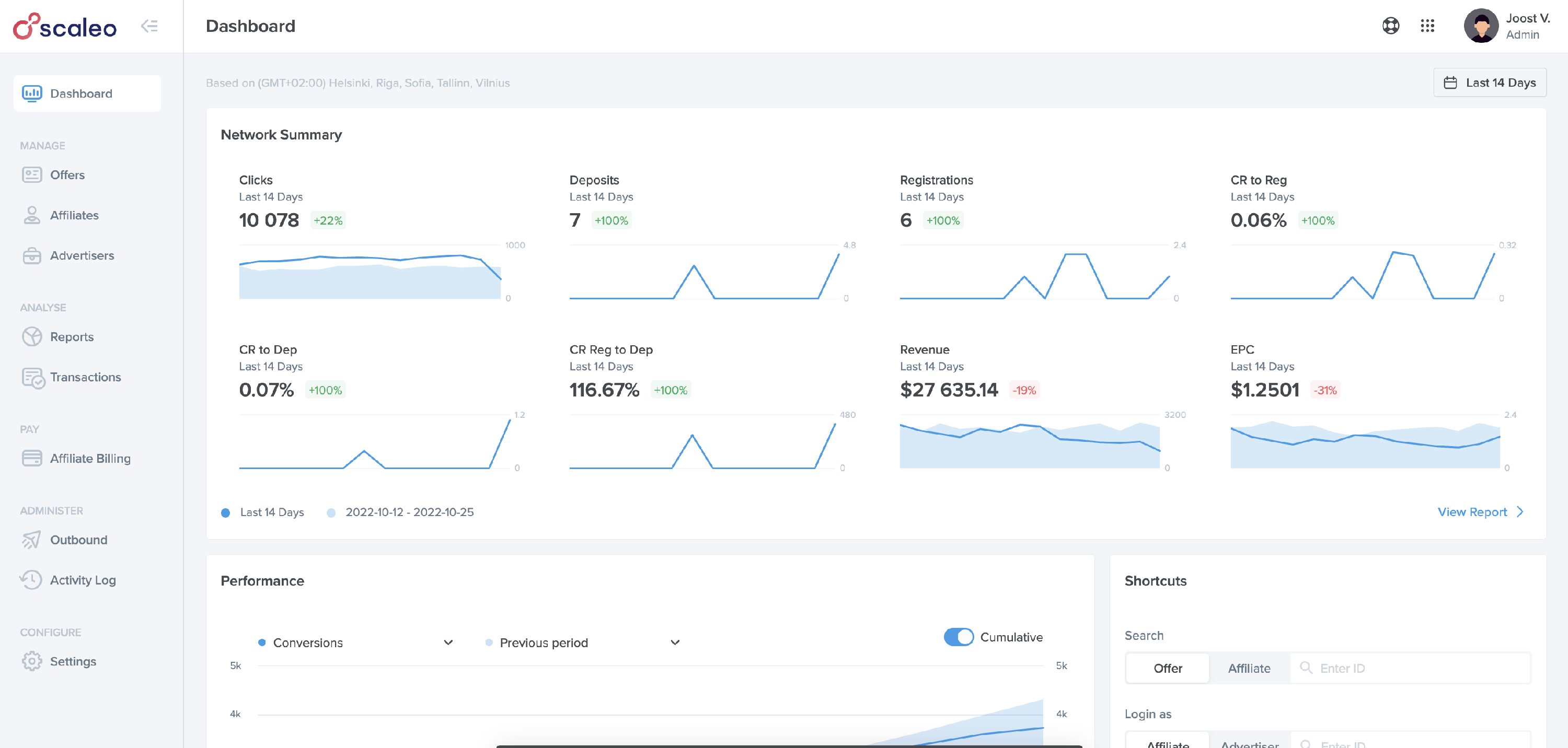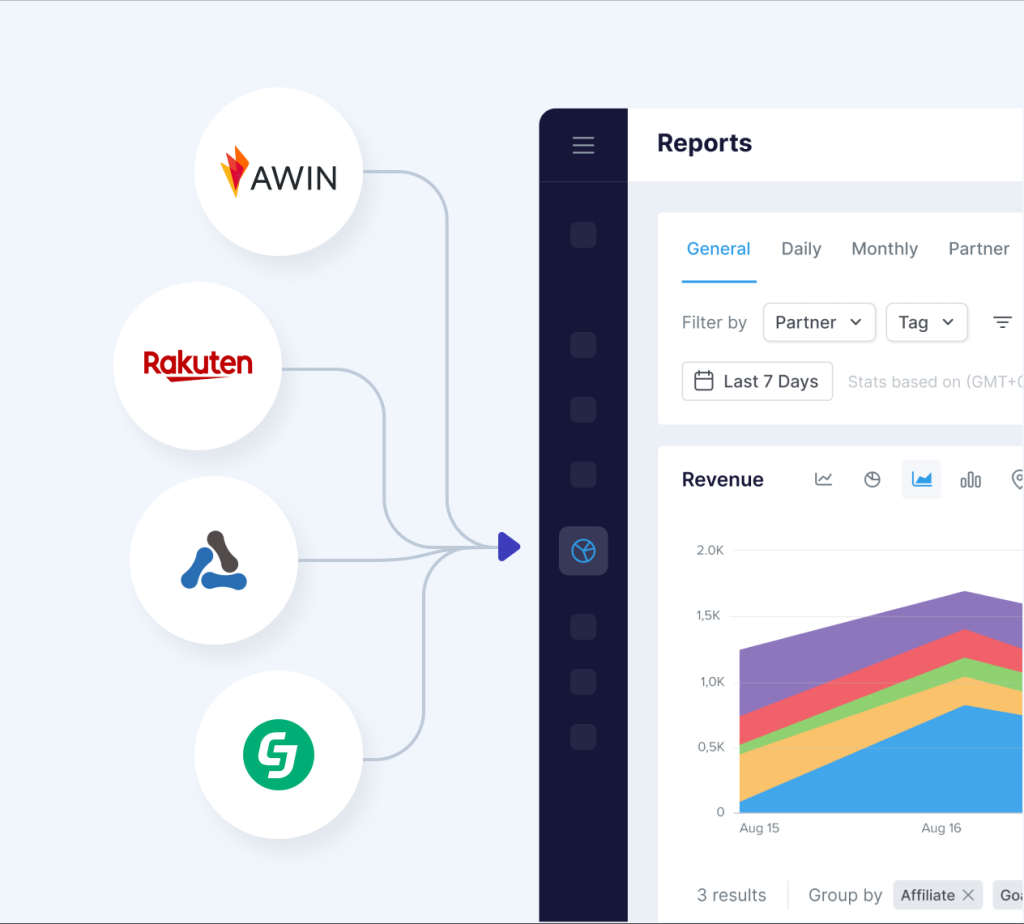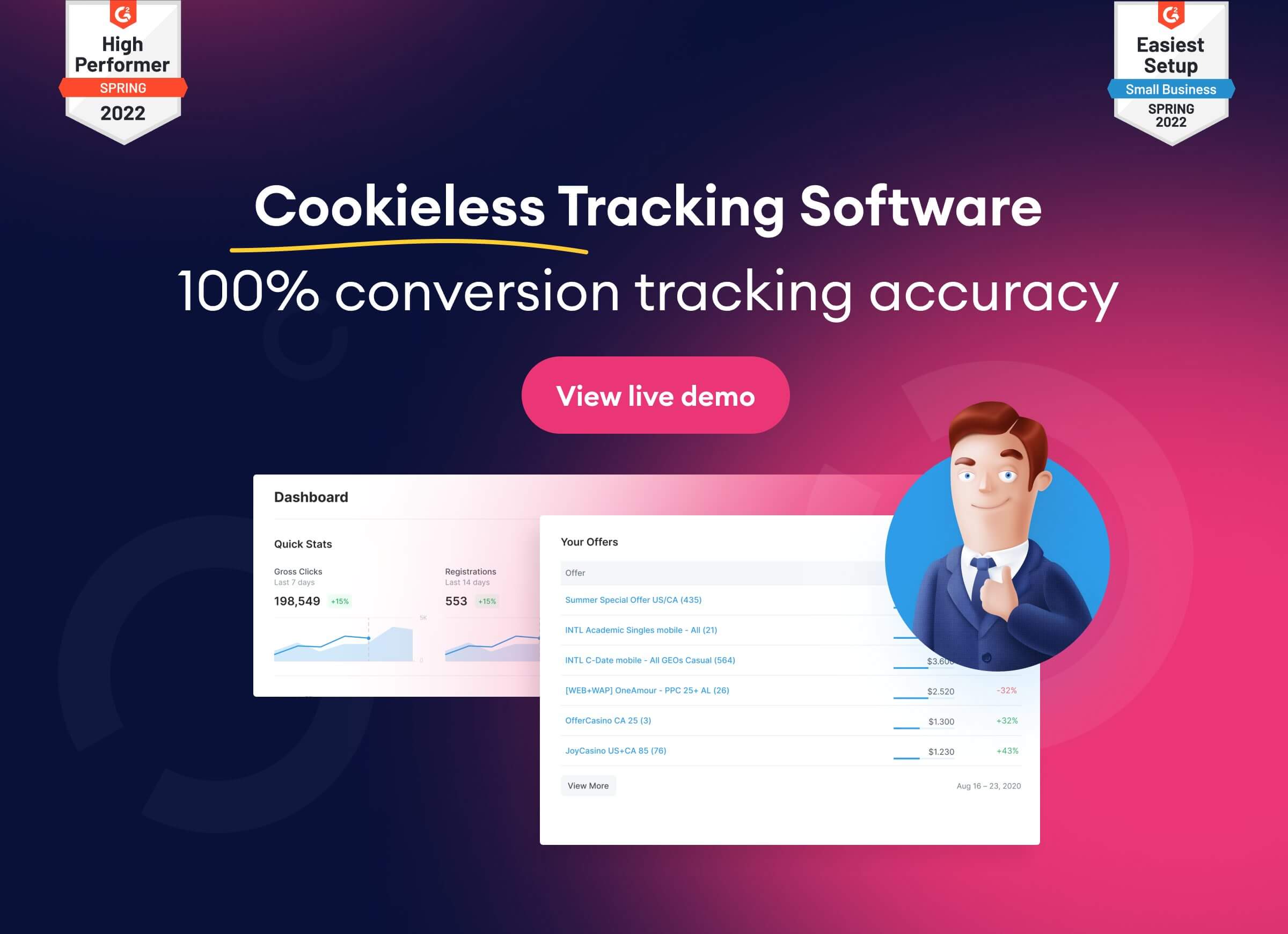Affiliate models stay more or less the same throughout the years, but as the popularity of affiliate marketing grows, so does the need to understand the new various commission models available to both businesses and affiliates.
In this article, we’ll look at 10 different affiliate marketing commission models, including pay-per-sale, pay-per-lead, pay-per-click, pay-per-impression, two-tier commission, recurring commission, multi-level marketing, and cost-per-action. By the end of this article, you’ll have a thorough understanding of each commission model and its distinct advantages and will be able to find the one that best suits your business.
So, this is a must-read whether you’re a company looking to launch an affiliate marketing program or an affiliate looking to increase your earnings.
Let’s get this party started!
10 Types of Affiliate Commission Models
| Type | Description |
|---|---|
| Cost Per Acquisition (CPA) | Commission paid when a specific action is completed, like a sale or sign-up. |
| Revenue Share | Earning a percentage of the revenue generated by the referred customer. |
| Pay Per Click (PPC) | Commission for each click generated from affiliate links. |
| Pay Per Lead (PPL) | Payment for each lead generated, like a user registration or form submission. |
| Pay Per Sale (PPS) | Commission for each sale made through the affiliate link. |
| Cost Per Mille (CPM) | Payment based on the number of impressions of an ad. |
| Tiered Commission | Different commission rates based on performance tiers or sales volumes. |
| Flat Fee | Fixed payment for each action, like a sponsored post or article. |
| Lifetime Commission | Continual earnings from customers referred by the affiliate. |
| Hybrid Models | Combination of different models, like CPA and Revenue Share. |
Pay per sale (PPS)
Pay per sale (PPS) is the most common affiliate marketing commission model type. In this model, the affiliate earns a commission every time a customer purchases a product or service through their referral link. The affiliate is usually paid a percentage of the sale price, and the commission is only paid when the sale is completed. Businesses benefit from this commission model because they only pay for successful conversions.
Pay per lead (PPL)
Pay per lead (PPL) is a commission model in which the affiliate receives a commission for each lead generated for the company. In this model, the affiliate receives a commission for each customer who, among other things, fills out a form, signs up for a trial, or completes a survey. PPL commission rates may be lower than PPS commission rates because lead conversion rates are typically lower than sales.
Pay per click (PPC)
Pay per click (PPC) is a commission model in which the affiliate is paid every time a customer clicks on their referral link. The affiliate does not need to make a sale or generate a lead to earn a commission under this model. Because it is easier to click on a link than to complete a purchase or fill out a form, the commission rate for PPC is usually lower than that of PPS and PPL.
Pay per impression (PPI)
Pay per impression (PPI, also known as CPM – cost per mile) is a commission model in which the affiliate is paid for each impression generated by their referral link. To earn a commission under this model, the affiliate does not need to make a sale, generate a lead, or even receive a click. PPI commission rates are typically very low because impressions are easier to generate than clicks or conversions.
Two-tier commission
A two-tier commission model is one in which the affiliate earns a commission not only on their own sales but also on the sales of affiliates they recruit. The affiliate is incentivized to recruit other affiliates and help them succeed in this model because they earn a commission on their sales. Businesses can benefit from two-tier commission because it encourages affiliates to recruit new affiliates, which can result in more sales and leads.
The Revenue Sharing model, also known as RevShare, is a commission model in which the affiliate earns a percentage commission on user purchases. This model is widely used in sports betting websites, porn sites, relationships, stock investments, forex trading, and so on.
This commission model is particularly appealing because it is recurring, i.e. when an affiliate generates a user for a relationship site and that user purchases a subscription. The affiliate receives his commission whenever he renews the subscription. When a user cancels their subscription, the affiliate loses their commission.
Recurring commission
The affiliate earns a commission for each recurring payment made by the customer they referred under the recurring commission model. The affiliate can earn a commission under this model as long as the customer remains a paying customer. Recurring commission is advantageous for businesses that provide subscription-based services or products because it incentivizes affiliates to refer customers who will remain loyal and pay for the product or service.
Multi-level marketing (MLM)
MLM is a commission model in which the affiliate not only earns a commission on their own sales but also on the sales of the affiliates they recruit, the affiliates recruited by those affiliates, and so on. MLM is contentious because it can resemble a pyramid scheme if it emphasizes recruiting new affiliates rather than selling goods or services. Conversely, MLM can be a legitimate business model if the primary goal is to sell products or services rather than recruit new affiliates.
Cost per action (CPA)
CPA is an abbreviation for cost per action or cost per acquisition. It is an affiliate marketing commission model in which the affiliate is paid for a specific action taken by the customer they referred. The action can be a purchase, completing a form, signing up for a trial, or any other action deemed valuable by the company.
Because the action required is usually more valuable to the business, the commission rate for CPA can be higher than that of other commission models. CPA is also advantageous for affiliates because it does not require them to generate a sale or lead to earn a commission, which makes it easier than other commission models.
Why Do You Need Affiliate Marketing Software?
With the advancement of technology, new software solutions have emerged to assist businesses in streamlining their affiliate marketing efforts. Scaleo is one software that offers a variety of features that can help businesses create and manage their affiliate programs more efficiently. Let’s look at the advantages of using affiliate marketing software such as Scaleo, which allows advertisers to create offers with various commission structure models.
Flexibility in commission models
The flexibility it provides in commission models is one of the most significant advantages of using Scaleo. Advertisers can use Scaleo to create offers with various commission structures, such as pay-per-sale, pay-per-lead, pay-per-click, and many others. This enables companies to tailor their affiliate program to their specific needs and target audience, increasing the likelihood of success.
Furthermore, the ability to use different commission models gives affiliates more options, which can attract a broader range of potential partners.
Automated tracking and reporting
Another advantage of using Scaleo is its ability to track affiliate referrals and sales automatically. This eliminates the need for time-consuming and error-prone manual tracking.

Scaleo provides advertisers with real-time reports on the performance of their affiliate program, including the number of clicks, conversions, and earnings. This enables advertisers to make data-driven decisions to optimize the performance of their affiliate program continuously.
Customizable tracking parameters
Scaleo enables advertisers to customize tracking parameters such as referral sources, sub-IDs, and cookies. This allows businesses to more accurately track affiliate performance and attribute sales to the appropriate affiliates. Furthermore, the ability to customize tracking parameters gives businesses more control over their affiliate program, which can increase affiliate trust and transparency.
Affiliate management tools
Scaleo provides a number of affiliate management tools, including affiliate approval, rejection, and blacklisting. This allows businesses to manage their affiliate program and weed out low-performing affiliates more efficiently. Furthermore, the ability to blacklist affiliates who engage in fraudulent activities can protect businesses from financial losses and reputational harm.
Third-party tool integration
Scaleo’s integration with various third-party tools, such as payment gateways, email marketing platforms, and analytics tools, is another significant advantage.

This gives businesses a one-stop shop for managing their affiliate program and streamlining their marketing efforts. Integration with third-party tools can also improve the affiliate program’s scalability and functionality.
Cost-effective solution
Scaleo is a low-cost solution for businesses looking to set up and manage an affiliate program. It provides a number of features found in more expensive affiliate marketing software solutions, making it an appealing option for small to medium-sized businesses. Furthermore, the ability to create offers with varying commission structures can help businesses optimize their budget and allocate resources more efficiently.
Better reporting and analysis
Scaleo provides advanced reporting and analysis tools to businesses, allowing them to gain insights into the performance of their affiliate program. Advertisers can access detailed reports on clicks, conversions, earnings, and a variety of other metrics, which can assist them in making data-driven decisions to optimize the performance of their affiliate program. Furthermore, analyzing and tracking affiliate performance in real-time allows businesses to identify and address potential issues as soon as they arise.

Affiliate marketing software solutions like Scaleo can benefit businesses, including commission model flexibility, automated tracking and reporting, customizable tracking parameters, affiliate management tools, integration with third-party tools, cost-effectiveness, and enhanced reporting and analysis. Advertisers can use Scaleo to more efficiently create and manage their affiliate programs and optimize their budgets.
Conclusion
Understanding the various affiliate marketing commission models is critical for businesses looking to establish a successful affiliate program and for affiliates looking to maximize their earnings. Pay-per-sale, pay-per-lead, pay-per-click, pay-per-impression, two-tier commission, recurring commission, multi-level marketing, and cost-per-action are all commission models with distinct characteristics and benefits.
Businesses can tailor their affiliate program to their specific needs and target audience by selecting the right commission model, increasing their chances of success. Furthermore, the flexibility provided by different commission models can attract a broader range of potential partners, improving the affiliate program’s scalability and functionality.
Overall, understanding the various commission models available in affiliate marketing can help businesses and affiliates make informed decisions to continuously optimize the performance of their affiliate program.
Last Updated on January 17, 2024





